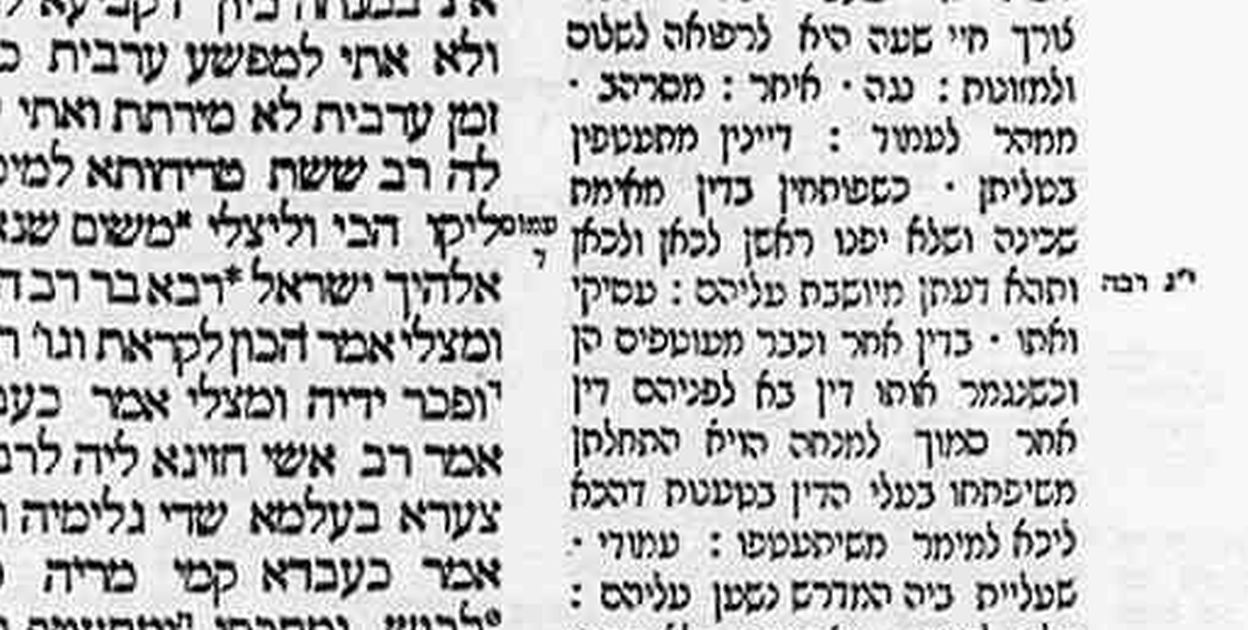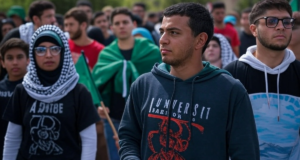 Ofer Prison, near Jerusalem, May 28 – Hamed Abu Ris, 22, burst forth in a flood of incriminating information this morning after being forced to sit through an explanation of the differences between similarly named Talmudic figures.
Ofer Prison, near Jerusalem, May 28 – Hamed Abu Ris, 22, burst forth in a flood of incriminating information this morning after being forced to sit through an explanation of the differences between similarly named Talmudic figures.
Abu Ris, a suspected member of the terrorist organization Hamas, was detained Sunday in a raid on a hideout in Iata, south of Jerusalem. He had remained silent through multiple interrogation sessions, at one point even refusing to acknowledge offers of water or food. Constrained by legal limits on interrogative methods, the IDF Intelligence Corps personnel opted not to apply physical measures to extract information, but brought in an Arabic-speaking Rabbi to hold forth on the importance of distinguishing between, for example, Rabba and Rava, or Rabbi Yehuda and Rav Yehuda.
Within twenty minutes the suspect, who was restrained and unable to cover his ears, was yelling his readiness to confess, and that hearing more of the material would drive him crazy. When the Rabbi stopped talking Abu Ris reconsidered his offer to cooperate, but two minutes into a resumed exploration of the important distinctions between Rabbi Elazar of the Mishna and Rabbi Elazar of the Gemara, the detainee went cross-eyed, fell off his chair, and assumed a fetal position. His interrogators asked the Rabbi to stop, helped him back into his chair, and listened as he spoke for forty-five minutes nonstop, providing detailed information on Hamas recruitment, personnel, operations, and resources in the area.
Human rights organizations are divided on the methodology. “We have our reservations about various methods of psychological pressure,” said Human Rights Watch spokesman Noman Claitcher. “The practice in question does not technically violate the principles of humane interrogation techniques, but we hesitate to endorse it, given the apparent emotional impact on this detainee.”
Amnesty International was less hesitant, calling the technique acceptable. “We can all use to be educated on the finer points of Talmudic personalities,” said activist Bisai DePoint. “Now Mr. Abu Ris can probably resolve several troubling apparent contradictions between the Vilna editions of Tractates Sotah and Eruvin,” she said.
“You know, we should encourage other governments to adopt this, she continued. “After all, it’s crucial to know that the Rabbi Elazar mentioned in the Mishna – as opposed to Rabbi Eliezer, who was somebody else – was Rabbi Elazar ben Shamua, and he lived several generations before Rabbi Elazar ben Pedat, who was a disciple of – hey, why are you running away?!”




